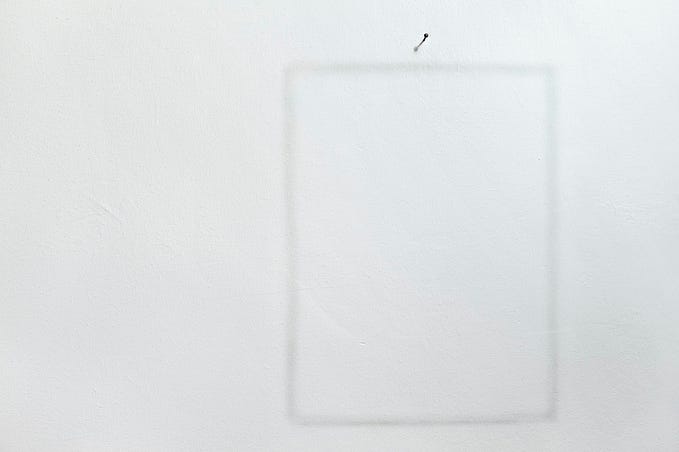- I’ve interviewed hundreds of candidates as a hiring manager.
- In the early days, I didn’t get any formal training on how to conduct interviews or managing the interview process. And I made too many f — — ups. I hope you don’t make the same mistakes as I did.
- This is based on my experience and from the advice I have received from my mentors.
- I hope this helps the people going through interviews to get a sense of what’s going on on the other side of the table (or those who are starting to make hiring decisions). I’m still trying to get better at this. Any suggestions are welcome.

You may think only the job interviewees need preparation for an interview but that’s wrong. Hiring managers do also need hefty preparation for an interview process. Since one superstar hire will change everything, we want to make sure that we don’t f — — up.
Planning
You realize that you need an additional team member(s) probably because of one of the following reasons:
- Someone left the team
- Product roadmap gives you confidence that you need a bigger team or an additional skillset within the team.
- If the company/team is growing quickly, you would probably get an email saying something like this: “The company is expected to grow by 50% next year. Please prepare a hiring plan.”
Align with other managers. If you increase your team’s headcount, another team may have to reduce their hiring plan’s headcount.
Then you will need to talk to the finance team to check out the budget. This is a forcing function from the finance team to make sure that the reason for the new hire is well thought out. That is, you are expected to justify the cost of the new hire.
Let the words out
- Once the new headcount is approved, align with the HR team to figure out the job description (HR usually has a template that you can edit) and screening questions. You want to be involved in this process in-depth. The more clearly defined the job description is, and the screening questions are, the less work you will have to do down the road as these will filter out lots of obviously non-matching candidates. Do not delegate this work. The person who has a clear understanding of what the role entails, a.k.a. the hiring manager, should write them.
- The HR will send them out to recruiters and/or post them on job boards. You don’t have to do much here. In some cases, the recruiter may contact you for a calibration meeting. It’s for the recruiters to get more insights into the kind of profile you’d like to hire.
Map & Reduce
Applications start to come in. At this stage, you want to focus on filtering out the résumés. You are simply mapping out the job requirements to what’s written on the résumés. Evaluate each application quickly and make a decision. False negatives are acceptable at this stage. Reduce the candidate pool as much as possible.
- As a hiring manager, you’d be tempted to look at all the applications thoroughly. That will take too long, and you have other things to do, too! Spend as little time as possible with the candidates you won’t hire.
- This allows you to spend more time with the candidates you are likely to hire.
For candidates: This is why your résumé needs to stand out while being concise. Hiring managers do not have enough time to read everything on your resume. You don’t get bonus points for a high word count.
The real thing
Now the fun begins. The candidates will go through a structured interview process. Each stage of the interview has a specific intention. The hiring manager uses the time to collect facts and data about the candidates in a (reasonably) structured format. You try to make it as objective as possible, remove biases, and remove blind spots. But of course, it will never be perfect (once, I was told that interviews are more of an art than a science).
In my experience, most of the interview processes resembled something like the below.
- Screening Interview (15mins ~ 30mins)
- Technical Interview (2hrs ~ 5hrs)
- Behavioural/Culture Fit Interview (1hr ~ 2hrs)
- Team Interview (1hr ~ 4hrs)
Screening Interview: Unless you have a strong feeling that the candidate is a superstar, try not to go over the scheduled time. And it’s common to be done by the HR department. You will eliminate 90% of the candidates at this stage. Make sure to let the candidates know about your decision with 24 hours and end it on good terms. That’s the respectful thing to do.
For candidates: At this stage, the person on the other side already read your application and résumé. Don’t repeat what’s already written in the résumé. Prepare an intro that’s not covered in your application. Make it interesting. This intro will have a lasting impression throughout the interview process.
Technical Interview: This is a structured interview process, where you ask specific questions relevant to the job. If you do not have the technical expertise for the job, make sure to bring someone who does. The interview questions should be reasonably exhaustive in a sense that it touches many different technical areas the job requires. For critical areas, go in-depth to see if the candidate understands the topic at the fundamental level. Write down detailed notes on the strengths and the weaknesses of the candidates.
Behavioural/Culture Fit Interview: Make sure to get help from HR on how to achieve this in a way that aligns with the company’s culture and principles. It’s important to establish good probing questions to evaluate candidates fairly.
Team Interview: At this stage, bring in other people from your team to evaluate the candidates. Each interviewer needs to send you written feedback about the candidates. The goal of this stage is to ensure that you do not have a critical blind spot.
Once all the feedbacks are collected, consolidate it and make a hiring decision. If the decision is no, use the consolidated notes from each interviewer to write a thorough feedback note and send it to the candidate. This really helps the candidate to do so much better in future interviews.
Sell the job
Once you have decided to hire the candidate, sell to the candidate to join your team. Your superstar candidate is a superstar candidate to other companies, too. This candidate can work anywhere. Give a clear and structured view of why the job would be great for them, what the job will be like, why it’s important for the company, and how much they are likely to make if they do well on the job (“You will make $XXX,XXX in 4 years if you fulfill all your objectives in this job”).
Once they join, you should know that they are still evaluating the job for the first few months. It’s not uncommon to see new hires leave shortly after due to a bad onboarding process (I’ve made this mistake and lost a new hire after spending two months of hiring and two months onboarding the person).
I hope you enjoyed this post and hope this gave you some context of why the interview processes are set up in such ways. Knowing this, you’d be able to better prepare for each stage of the interview and have a better understanding of what each stage is trying to achieve.








